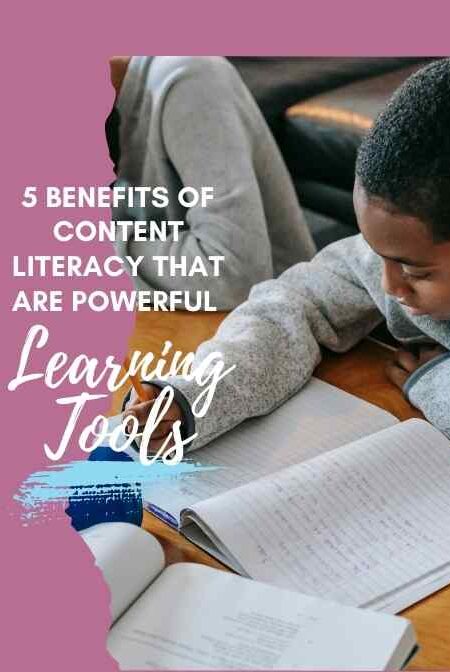What is your favorite content area reading strategy? Can you name one off the top of your head?
When I started teaching I knew content area reading was important, but I thought it simply meant reading during science and social studies. While this isn’t wrong per se, there is a lot more to it than rolling out the textbooks and assigning reading.
After I started to learn more about content literacy, I began gathering tools for my instructional toolbelt. While not every tool works with every reading passage, it was important to me to build a buffet of options to help me ensure success.
The long and short of it is that reading in content areas isn’t entirely unlike reading in language arts. We are always teaching our students to read to learn, but by showing them how to do so strategically we can magnify their content learning while strengthening their reading skills.

Why Are Content Area Reading Strategies Important?
Reading to learn is a life skill, and by extending our reading instruction throughout the school day, we are better able to accomplish the goal of developing lifelong readers.
When we read in content areas, we are harnessing the high-interest subjects of social studies and science to engage readers in deeper meaning and comprehension. I would argue that reading in these subjects allows our students to explore their critical thinking skills more extensively as well!
Reading in content areas allows our students to take the reading skills they are taught during ELAR and use them “in the wild.” For example, learning about text features is one thing, but using text features to navigate a website all about the Webb Telescope’s latest findings is a much richer experience.
Why Should I Use Content Area Reading Strategies?
Literacy skills are beneficial to students across all subjects, but some particular benefits to using content area reading strategies include:
- Encouraging critical thinking
- Increased exposure and use of vocabulary
- Opportunities for discussion of reading material
Of course, there are many more benefits!
How to Get Started with Content Literacy
First of all, don’t force it!
When you begin to think about including more reading activities in your content areas, start small and think about what you are already doing. Instead of plunging into a whole new world, take it slow and begin by including more opportunities to read about content subjects.
Once this begins to feel natural, you are ready to take the next step into using content area reading strategies.
For example, during your unit on the American Civil War, give your students the opportunity to read and discuss the Gettysburg Address. I would suggest giving students the opportunity to preview it on their own, then read it aloud to the class. After that, you are ready to build in those content area reading strategies. In turn, ask students their thoughts on the speech, how they would summarize the information, or what questions they have about it.
I promise you will be impressed with their thoughts!
It is less about choosing the perfect piece of literature to use in content areas and more about how you use what you have.
Looking for an easy way to include content literacy in your social studies block? Check out these pre-written, standards-based passages for upper elementary.
More on Content Area Reading Strategies
When you think of incorporating reading strategies into your content blocks, don’t forget about the writing element. Literacy is just as much about writing as it is about reading.
For one of my favorite ways to integrate writing, check out this post.
Don’t take it from me though. Experts agree!
Just how important is content literacy? Short answer: very important!
Ready to get started? Choose your first piece of text and get it into your students’ hands today.
